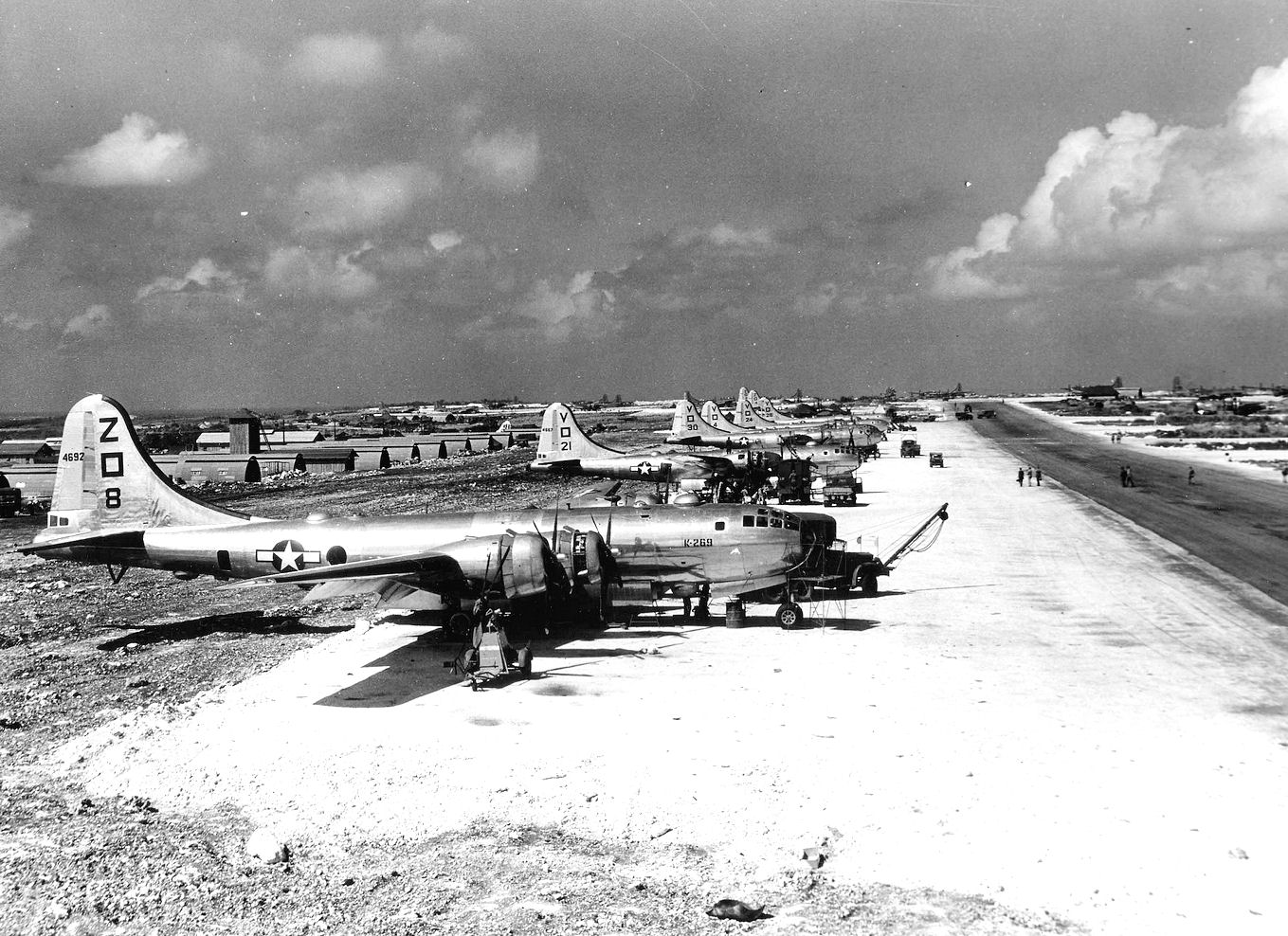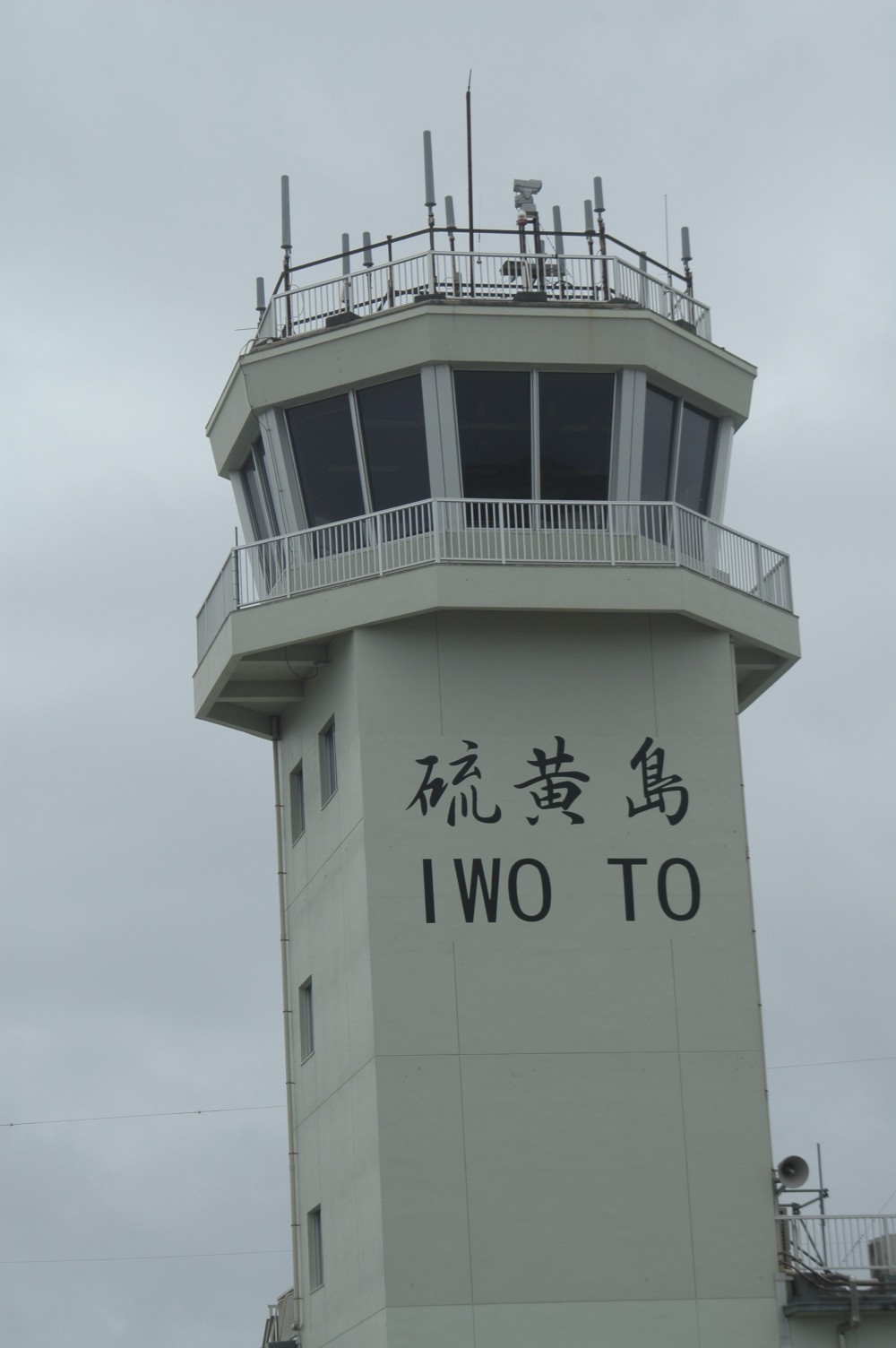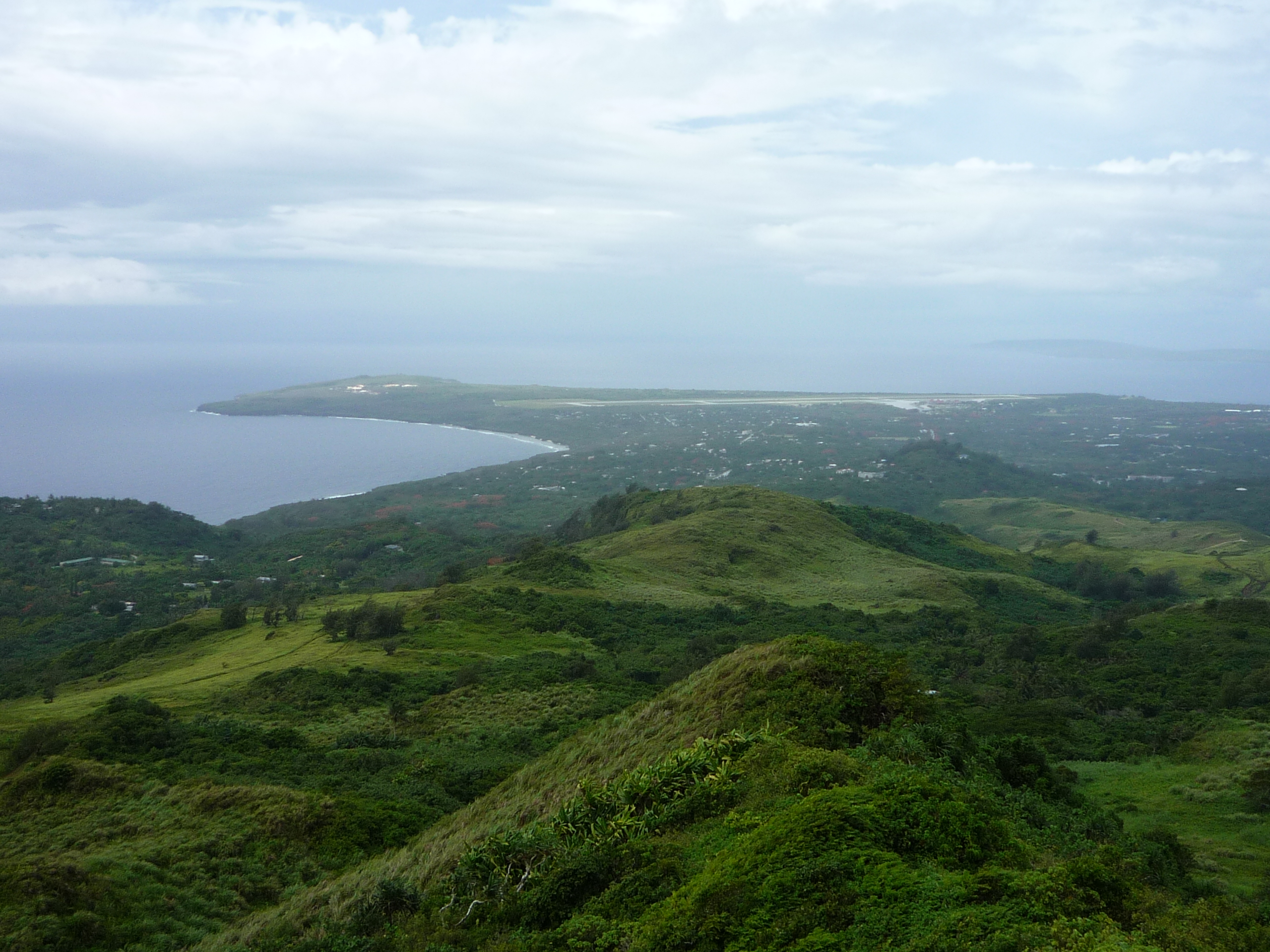|
499th Air Refueling Wing
The 499th Air Refueling Wing is an inactive United States Air Force (USAF) unit that was last active at Westover AFB, Massachusetts in June 1966. The wing was first activated as the 499th Bombardment Group of the United States Army Air Forces, which flew combat in the Pacific Theater of Operations as part of Twentieth Air Force during World War II. The 499th BG engaged in very heavy Boeing B-29 Superfortress bombardment operations against Japan for which it earned two Distinguished Unit Citations. Its aircraft were identified by a "V" and a square painted on the tail. The 499th Air Refueling Wing was an air refueling and airborne command and control unit active from 1963 to 1966. In 1984 USAF consolidated the group and wing into a single unit sharing a common history. History World War II The 499th Bombardment Group was established in late 1943 at Davis–Monthan Field, Arizona as a Boeing B-29 Superfortress very heavy bombardment group. The unit's original operational squa ... [...More Info...] [...Related Items...] OR: [Wikipedia] [Google] [Baidu] |
B-29 Superfortress
The Boeing B-29 Superfortress is an American four-engined propeller-driven heavy bomber, designed by Boeing and flown primarily by the United States during World War II and the Korean War. Named in allusion to its predecessor, the B-17 Flying Fortress, the Superfortress was designed for high-altitude strategic bombing, but also excelled in low-altitude night incendiary bombing, and in dropping naval mines to blockade Japan. B-29s dropped the atomic bombs on Hiroshima and Nagasaki, the only aircraft ever to drop nuclear weapons in combat. One of the largest aircraft of World War II, the B-29 was designed with state-of-the-art technology, which included a pressurized cabin, dual-wheeled tricycle landing gear, and an analog computer-controlled fire-control system that allowed one gunner and a fire-control officer to direct four remote machine gun turrets. The $3 billion cost of design and production (equivalent to $ billion today), far exceeding the $1.9 b ... [...More Info...] [...Related Items...] OR: [Wikipedia] [Google] [Baidu] |
878th Bombardment Squadron
The 878th Bombardment Squadron is a former United States Army Air Forces unit. It was activated in November 1943, equipped with Boeing B-29 Superfortress bombers, and assigned to the 499th Bombardment Group. After training in the United States, it deployed to Saipan, where it participated in the strategic bombing campaign against Japan, earning two Distinguished Unit Citations. After V-J Day, it returned to the United States, where it was inactivated at March Field, California on 16 February 1946. History The squadron was activated at Davis-Monthan Field, Arizona in November 1943 as one of the original four squadrons of the 499th Bombardment Group. Ten days later, a cadre moved to Smoky Hill Army Air Field, Kansas to begin Boeing B-29 Superfortress very heavy bomber training. The 878th trained in Kansas with early model B-29s, with frequent delays in training due to modifications of the aircraft correcting production deficiencies. When training was completed. the squadron ... [...More Info...] [...Related Items...] OR: [Wikipedia] [Google] [Baidu] |
Invasion Of Okinawa
The , codenamed Operation Iceberg, was a major battle of the Pacific War fought on the island of Okinawa by United States Army (USA) and United States Marine Corps (USMC) forces against the Imperial Japanese Army (IJA). The initial invasion of Okinawa on 1 April 1945 was the largest amphibious assault in the Pacific Theater of World War II. The Kerama Islands surrounding Okinawa were preemptively captured on 26 March, (L-6) by the 77th Infantry Division. The 82-day battle lasted from 1 April until 22 June 1945. After a long campaign of island hopping, the Allies were planning to use Kadena Air Base on the large island of Okinawa as a base for Operation Downfall, the planned invasion of the Japanese home islands, away. The United States created the Tenth Army, a cross-branch force consisting of the U.S. Army 7th, 27th, 77th and 96th Infantry Divisions with the USMC 1st, 2nd, and 6th Marine Divisions, to fight on the island. The Tenth was unique in that it had its own Tacti ... [...More Info...] [...Related Items...] OR: [Wikipedia] [Google] [Baidu] |
Kyūshū
is the third-largest island of Japan's five main islands and the most southerly of the four largest islands ( i.e. excluding Okinawa). In the past, it has been known as , and . The historical regional name referred to Kyushu and its surrounding islands. Kyushu has a land area of and a population of 14,311,224 in 2018. In the 8th-century Taihō Code reforms, Dazaifu was established as a special administrative term for the region. Geography The island is mountainous, and Japan's most active volcano, Mount Aso at , is on Kyushu. There are many other signs of tectonic activity, including numerous areas of hot springs. The most famous of these are in Beppu, on the east shore, and around Mt. Aso in central Kyushu. The island is separated from Honshu by the Kanmon Straits. Being the nearest island to the Asian continent, historically it is the gateway to Japan. The total area is which makes it the 37th largest island in the world. It's slightly larger than Taiwan island . ... [...More Info...] [...Related Items...] OR: [Wikipedia] [Google] [Baidu] |
Nagoya
is the largest city in the Chūbu region, the fourth-most populous city and third most populous urban area in Japan, with a population of 2.3million in 2020. Located on the Pacific coast in central Honshu, it is the capital and the most populous city of Aichi Prefecture, and is one of Japan's major ports along with those of Tokyo, Osaka, Kobe, Yokohama, and Chiba. It is the principal city of the Chūkyō metropolitan area, which is the third-most populous metropolitan area in Japan with a population of 10.11million in 2020. In 1610, the warlord Tokugawa Ieyasu, a retainer of Oda Nobunaga, moved the capital of Owari Province from Kiyosu to Nagoya. This period saw the renovation of Nagoya Castle. The arrival of the 20th century brought a convergence of economic factors that fueled rapid growth in Nagoya, during the Meiji Restoration, and became a major industrial hub for Japan. The traditional manufactures of timepieces, bicycles, and sewing machines were followed by th ... [...More Info...] [...Related Items...] OR: [Wikipedia] [Google] [Baidu] |
Iwo Jima
Iwo Jima (, also ), known in Japan as , is one of the Japanese Volcano Islands and lies south of the Bonin Islands. Together with other islands, they form the Ogasawara Archipelago. The highest point of Iwo Jima is Mount Suribachi at high. Although south of the metropolis of Tokyo on the mainland, this island of 21 km2 (8 square miles) is administered as part of the Ogasawara Subprefecture of Tokyo. Since July 1944, when all the civilians were forcibly evacuated, the island has had a military-only population. The island was the location of the Battle of Iwo Jima between February 1945 and March 1945. This engagement saw some of the fiercest fighting of the Pacific War, with each side suffering over 20,000 casualties in the battle. The island became globally recognized when Joe Rosenthal, of the Associated Press, published his photograph '' Raising the Flag on Iwo Jima'', taken on Mount Suribachi. The US military occupied Iwo Jima until 1968, when it was returned to ... [...More Info...] [...Related Items...] OR: [Wikipedia] [Google] [Baidu] |
Chuuk State
Chuuk State (; also known as Truk) is one of the four states of the Federated States of Micronesia (FSM). The other states are Kosrae State, Pohnpei State, and Yap State. It consists of several island groups: * Namoneas * Faichuuk * Hall Islands * Namonuito Atoll (Magur Islands) (northwest) * Pattiw (Western Islands) * Mortlock Islands Chuuk is the most populous state of the FSM with 50,000 inhabitants on . Chuuk Lagoon is where most people live. Weno Island in the lagoon functions as state capital and is FSM's biggest city. It is scheduled to possibly vote for independence as proposed. History Indigenous settlement Chuuk was first settled by Austronesians, believed to be from the Lapita culture of Island Melanesia. Archaeological evidence indicates that islands of Feefen and Wééné Islands had human settlements in the first and second century BC. Later evidence indicates that widespread human settlements appeared in Chuuk during the 14th century AD, as the Chuukese cul ... [...More Info...] [...Related Items...] OR: [Wikipedia] [Google] [Baidu] |
Saipan
Saipan ( ch, Sa’ipan, cal, Seipél, formerly in es, Saipán, and in ja, 彩帆島, Saipan-tō) is the largest island of the Northern Mariana Islands, a Commonwealth (U.S. insular area), commonwealth of the United States in the western Pacific Ocean. According to 2020 estimates by the United States Census Bureau, the population of Saipan was 43,385, a decline of 10% from its 2010 count of 48,220. The legislative and executive branches of Commonwealth government are located in the village of Capitol Hill, Saipan, Capitol Hill on the island while the judicial branch is headquartered in the village of Susupe. Since the entire island is organized as a single municipality, most publications designate Saipan as the Commonwealth's capital. As of 2015, Saipan's mayor is David M. Apatang and the governor of the Northern Mariana Islands is Ralph Torres. History Prehistory Traces of human settlements on Saipan have been found by archaeologists ranging over 4,000 years, includ ... [...More Info...] [...Related Items...] OR: [Wikipedia] [Google] [Baidu] |
Isely Field
Saipan International Airport , also known as Francisco C. Ada/Saipan International Airport, is a public airport located on Saipan Island in the United States Commonwealth of the Northern Mariana Islands. The airport is owned by Commonwealth Ports Authority. Its airfield was previously known as Aslito (during the Japanese South Seas Mandate) and Isely Field (during the American World War II and later period). This airport is assigned a three-letter location identifier of GSN by the Federal Aviation Administration, but the International Air Transport Association (IATA) airport code is SPN (the IATA assigned GSN to Mount Gunson Airport in Australia). History World War II Saipan International Airport was a sugarcane field before the Imperial Japanese Navy Air Service (IJNAS) constructed a temporary landing field on the site in 1933. The landing field was used for training purposes and had two runways configured in an "L" pattern. In 1937, the Navy began upgrading the airfield for f ... [...More Info...] [...Related Items...] OR: [Wikipedia] [Google] [Baidu] |
XXI Bomber Command
The XXI Bomber Command was a unit of the Twentieth Air Force in the Mariana Islands for strategic bombing during World War II. The command was established at Smoky Hill Army Air Field, Kansas on 1 March 1944. After a period of organization and its assigned groups receiving their B-29 Superfortress aircraft, the command transferred first to Peterson Field, Colorado, then deployed to the central Pacific, being headquartered at Harmon Field, Guam, in the Mariana Islands. Its assigned units engaged in very long-range bombardment operations, primarily against Japan until mid-July 1945. History The Marianas chain of islands, consisting primarily of Saipan, Tinian, and Guam, were considered as being ideal bases from which to launch B-29 Superfortress operations against Japan. The islands were about 1500 miles from Tokyo, a range which the B-29s could just about manage. Most important of all, they could be put on a direct supply line from the United States by ship. In August 1944, ... [...More Info...] [...Related Items...] OR: [Wikipedia] [Google] [Baidu] |
Boeing B-17 Flying Fortress
The Boeing B-17 Flying Fortress is a four-engined heavy bomber developed in the 1930s for the United States Army Air Corps (USAAC). Relatively fast and high-flying for a bomber of its era, the B-17 was used primarily in the European Theater of Operations and dropped more bombs than any other aircraft during World War II. It is the third-most produced bomber of all time, behind the four-engined Consolidated B-24 Liberator and the multirole, twin-engined Junkers Ju 88. It was also employed as a transport, antisubmarine aircraft, drone controller, and search-and-rescue aircraft. In a USAAC competition, Boeing's prototype Model 299/XB-17 outperformed two other entries but crashed, losing the initial 200-bomber contract to the Douglas B-18 Bolo. Still, the Air Corps ordered 13 more B-17s for further evaluation, then introduced it into service in 1938. The B-17 evolved through numerous design advances but from its inception, the USAAC (later, the USAAF) promoted the aircraft a ... [...More Info...] [...Related Items...] OR: [Wikipedia] [Google] [Baidu] |
Smoky Hill Army Air Field
Salina Regional Airport , formerly Salina Municipal Airport, is three miles southwest of Salina, Kansas, United States. The airport is owned by the Salina Airport Authority. It is used for general aviation, with service by one passenger airline, SkyWest Airlines (operating as United Express), subsidized by the Essential Air Service program. Salina Regional Airport is the home of the Kansas State University Polytechnic Campus Aviation Program with degrees available in Airport Management, Aviation Certificates, Aviation Electronics, Aviation Maintenance Management, Aviation Safety, Professional Pilot, Unmanned Aircraft Systems, Unmanned Aircraft Systems Design and Integration, and Unmanned Aircraft Systems Flight and Operations. History The airport is on the site of Schilling Air Force Base (previously Smoky Hill Army Air Field and Smoky Hill Air Force Base). The construction of military airfields after the Pearl Harbor Attack that caused the entry of the United States into World ... [...More Info...] [...Related Items...] OR: [Wikipedia] [Google] [Baidu] |









